Darien, GA
Wed., March 6th
The city of Darien was established in 1736 as a military outpost by Scottish Highlanders under the command of General James Oglethorpe (who was instrumental in the founding of Savannah and St. Marys) making this historic town the second oldest planned town in Georgia. Darien is about an hour south of Savannah. A charming town on the waterfront. We chose a cool but sunny day to go explore it via a self-guided walking tour.
There is a historic waterfront area where shrimp boats were docked in the middle of the day. Very picturesque, although that part of the dock appeared to be more for commercial use so we couldn’t really go exploring over there. I was surprised that they were actually docked and not out working….
Tabby Ruins were in evidence near the waterfront which show the outline of the original cotton exchange warehouses and naval stores built from 1815 to 1830. Tabby is a mix of oyster shells and concrete used quite prevalently as the material of choice in these old historic buildings in this part of the south. Often times you can make out the oyster shells in the concrete quite clearly. Darien was a leading commercial port for exporting cotton, rice and timber. Next to the ruins was the Adam Strain Building (c. 1813) which was a stuccoed tabby two-story warehouse that was burned in 1863 but refurbished shortly thereafter. It was used as a mercantile store. It’s the oldest commercial building in town but definitely a ruin.
There are several historic churches still in use today… First Presbyterian Church (building c. 1900) was founded by the Scottish Highlanders in 1726 and was the first Presbyterian congregation in Georgia. Plus there are two Episcopal churches. One built around 1836 and the other was built by former slaves. That church was restored after suffering damage during the hurricane of 1898.
We visited an Old Jail, which has been converted to an art center, now fittingly called the “Old Jail Art Center.” It was built in 1888 and is one of the three oldest buildings in Darien. It originally housed inmates plus the sheriff and his family lived there. (Similar to the jail in St. Augustine.) The last jailer was in residence until the 1970’s. A new jail was built in 1970 so this one was abandoned. It was taken over by the McIntosh Art Association, refurbished, and reopened in 2007. The first floor is gallery space showcasing the work of local artists. (The work was interesting but not necessarily to our taste.) The second floor houses the museum in the jail cells showcasing local history. One piece in particular was fascinating… a 4-page letter from a union soldier writing to his wife. He was commanded by his superior to destroy the houses and plantations as they were making their way through town. No one was injured as all the inhabitants had fled from their homes but he was having difficulty carrying out his duties since he felt the destruction was so needless. This was as the war was ending and the north had basically won. Another letter talked about a wealthy plantation owner who had lost much of his fortune and was forced to sell his slaves. They were trying to keep immediate slave families together. Amazing to read about these things….
We visited Vernon Square which follows the concept of similar town planning used by James Oglethorpe in Savannah. This square was the hub of the community in the 19th century and it was surrounded by wealthy homes of the lumber barons of the time. Now it’s just a lovely green space with a fountain and places to sit. Near the square was a large old historic home that had been converted into a confectionery… and it was open! Just our luck. We wandered in and were met by the owner Dale who was in the process of making huge easter eggs. The downstairs was so charming. She has her chocolates lavishly displayed in each room with lots of samples available. We had a very enjoyable time in her shop and bought a few goodies. She and her husband had lived in Atlanta for years but were looking to relocate their business to a quieter town. I asked if they live upstairs. She said no but there are a few extra bedrooms upstairs. Since their home is quite small, they use the bedrooms upstairs for visiting guests. Lucky guests! She was a delight… and gave us recommendations for a place for lunch and to stop at Turnip Greens, a local small grocer. We checked out the grocer who had a lot of local goodies for sale. I bought cheese straws, because I could. 🙂
Lunch was on the waterfront at a place called Skippers Fish Camp.They were doing a lively local business during the middle of the week… obviously a popular spot! We had about a 15 minute wait so used the time to meander around the waterfront. Gary had fabulous chicken bbq and I had a shrimp boat… sautéed shrimp on a baked potato with all the fixings. It was good but Gary’s chicken bbq was to die for. He made the better choice.
After lunch we wandered around town a bit longer, then headed back to our tiny home.
The Okefenokee National Wildlife Refuge
Thurs., March 7th
While visiting this part of Georgia for an extended stay we definitely wanted to make time to go see the famous Okefenokee Swamp. One would think that would be a simple task… plug it into google and off you go. Not so fast. The refuge is 396,000 acres, or as one graphic put it 300,000 football fields. Or put another way, the Okefenokee is a vast bog inside a huge saucer-shaped depression that was once part of the ocean floor. It extends 38 miles north to south and 25 miles east to west. It is considered one of the most well preserved and intact freshwater ecosystems in the world. Where to start??? After some research (because this is not easily ciphered!), we discovered there are basically three entrances into the swamp. A West entrance via Stephen C. Foster State Park where there is also a campground, an East entrance is thru Okefenokee Swamp Park which is more of a commercial tourist enterprise, and the third is through the U.S. Fish and Wildlife Services “main East entrance” at the Suwannee Canal Rec Area. We opted for Door No. 3, which is also where Okefenokee Adventures offers a boat tour and it’s considered the official boat tour sanctioned by the Wildlife Refuge. There’s also a 7-mile Swamp Island Drive biking or driving loop and a 1.5 mile round trip hike on a boardwalk that leads to a 40 ft. viewing tower offering 360 degree views of one of the “prairies” and a lake. In this instance prairies are in the swamp rather than on dry land.
It’s about an hour and fifteen minute drive to the Suwannee entrance of the Wildlife Refuge. Between both of us (well, maybe more me) being incapable of getting out of the tiny house early and waiting for the day to warm up, we arrived in time to catch the 1:00 boat ride. We had a great “captain” whose family has lived near the swamp for over 100 years. In 90 minutes he educated us on the fact that Okefenokee means “Land of the Trembling Earth” and it trembles because of methane gas in the lower regions of the swamp that literally bubble up to the surface. He gave an example of this by pushing down on the peat layer with a large stick and bubbles surfaced. The mirror-like black water on the surface is due to tannins in the water from the peat and the cypress. It’s also the reason why the alligators have darker teeth. The tannins in the water have stained their teeth…. sort of like how my teeth get stained from drinking too much tea. TMI???? The reflective black water is truly remarkable. It can appear blue because of the reflection of the blue sky. Then other times it does indeed appear black. There are these remarkable floating peat “batteries” that allow for grasses and flowers to grow. They appear to be on solid ground but actually they are moving. Another reason for the name “The Land of the Trembling Earth.” If left long enough, these batteries eventually form trees on the islands and these floating structures are known as “houses.”
Fire is actually a friend to the swamp. The refuge uses prescribed burns to reduce the chance for an out of control fire. There are two types of trees found in the swamp… longleaf pine which are found on solid ground, and cypress trees that can be found in the swamp. Both are very slow growing. As our guide said, it can be hard to tell what’s solid earth and what’s swamp. If you see longleaf pine, you know you’re on solid earth and if you see cypress, you know you’re near or in the swamp.
We did see lily pads, lots of turtles and some alligators (big and small) and a beautiful plant called Never Wet, which gets it’s name because the water just rolls off the waxy leaves so it never appears wet. A very fun tour.
Afterwards we had lunch at one of the picnic tables near the visitor’s center, checked out the the 10 minute film (not very good) in the center then headed to Swamp Island Drive. The original plan was to bike it but Gary wanted to take his camera with a lens that’s about the size of my arm and we have no way of carrying that on the bike. So we drove the path and did see two alligators that were picture worthy. Also, we walked the 1.5 mile boardwalk path, which was awesome with the swamp on either side and great views from on top of the 40 ft tower.
That concluded our day at Okefenokee. Very glad to have finally seen it.

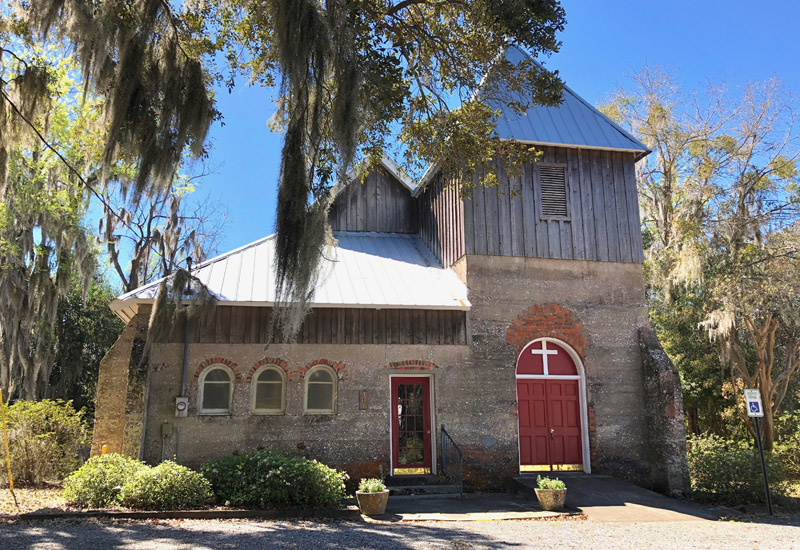
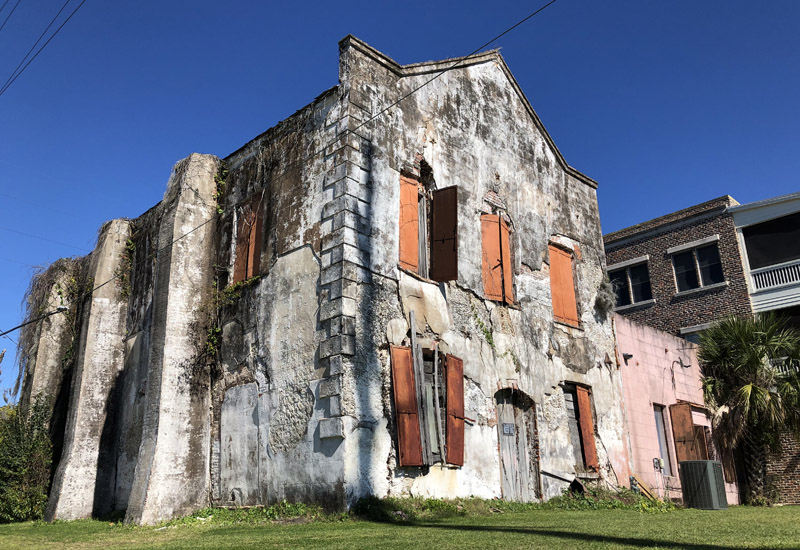



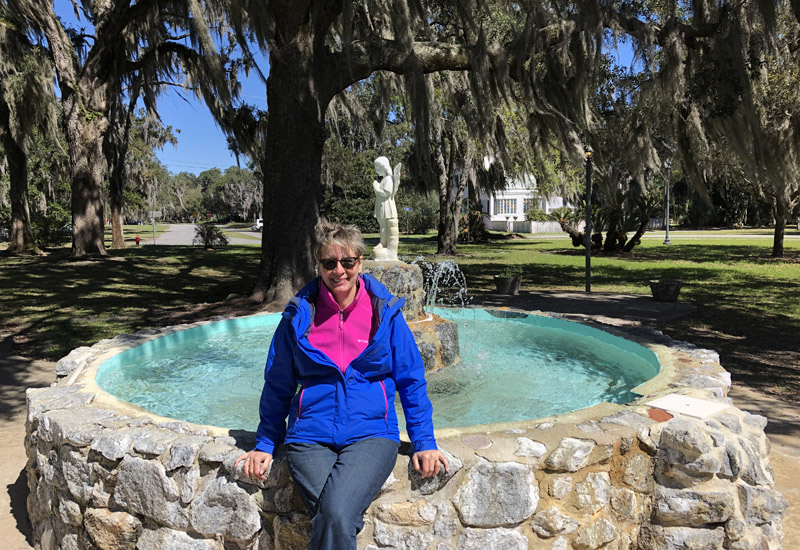
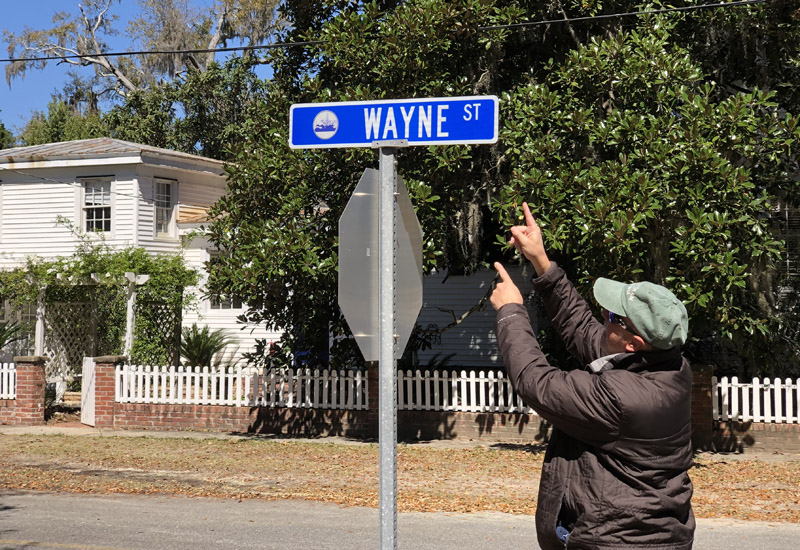



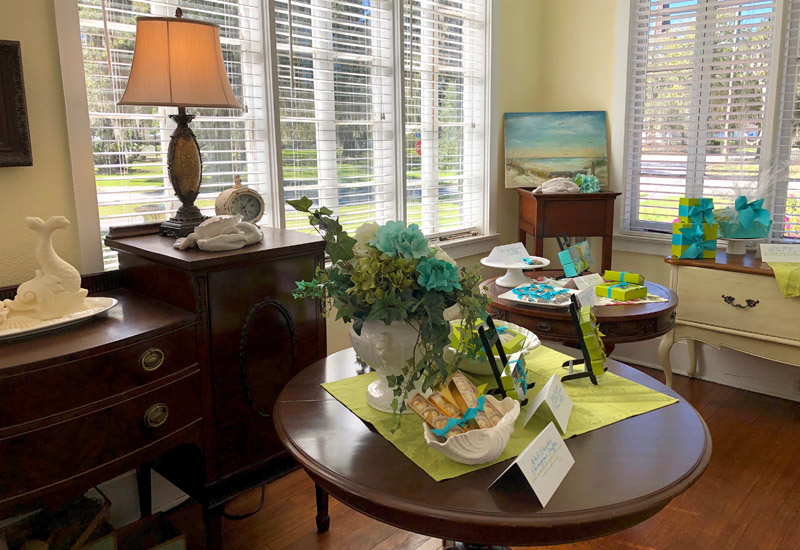
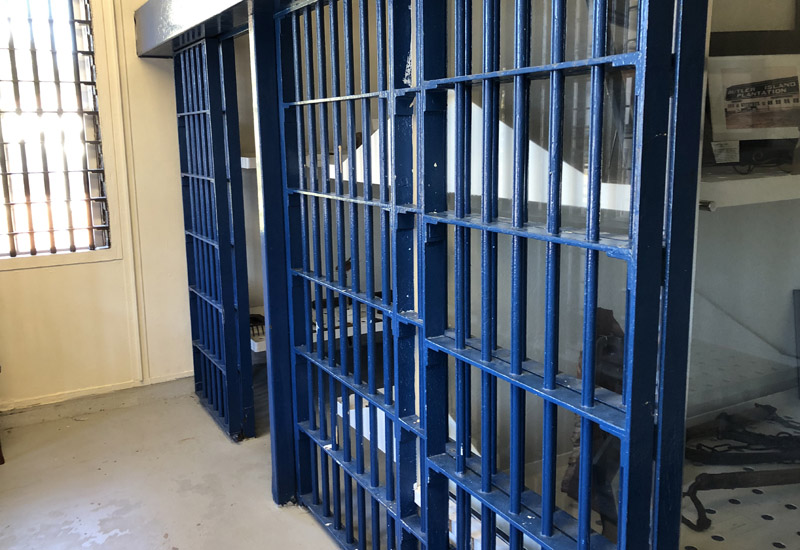

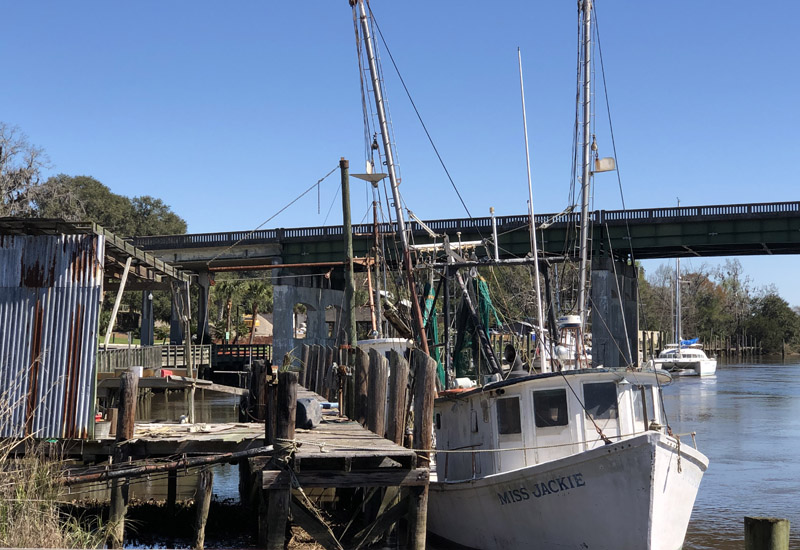



























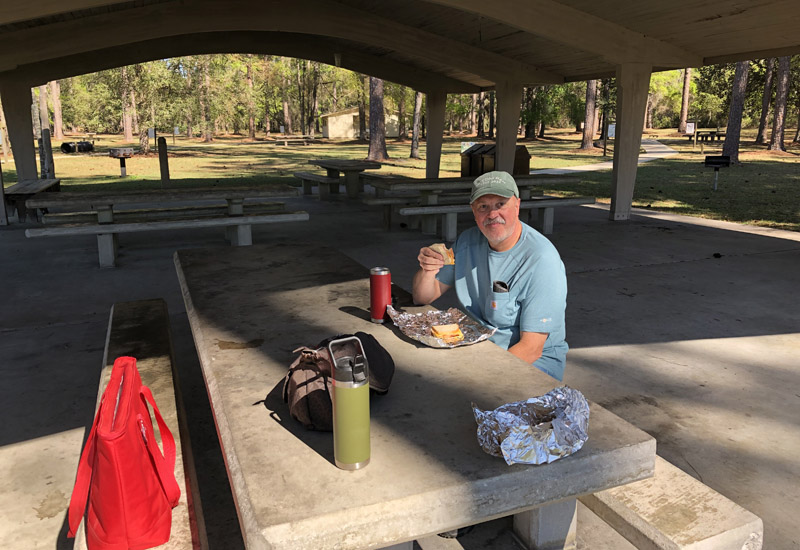


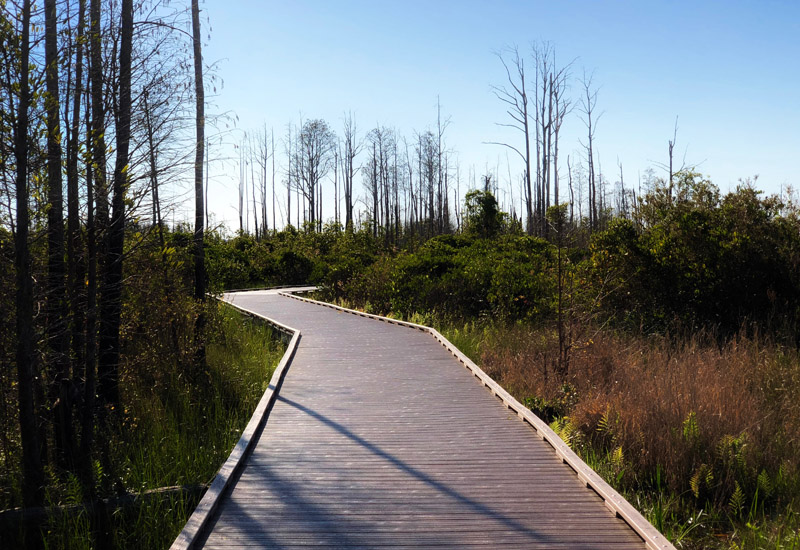






While I appreciate the shout out for Wayne Street… I really loved the images of Fort Clinch. We’ll try to save some snow for your return to NH…
GJ caught the Wayne Street! Of course, it would have been more fitting if it was Waynerd Street 🙂 The Ft. Clinch pics were mine so thanks for the compliment. Although GJ color corrected them, which did enhance them. Thanks but no thanks on the snow! xoxo